People often overextend themselves because they don’t know how to place limits on people. This can lead to exhaustion and other negative mental health effects. However, setting healthy boundaries can protect your well-being and help you stay mentally healthy.
In this article, I’ll discuss setting boundaries and how to set healthy limits that will benefit your mental health. I’ll also share some tips on how to stick to your boundaries once you’ve set them.
- What Are Healthy Boundaries and Why Are They Important
- What Happens If You Don’t Have Boundaries?
- Types of Boundaries
- Key Elements To Keep in Mind
- How To Set Healthy Boundaries in 4 Steps
- Dealing With Boundary Violations
- Don’t Apologize for Valuing Yourself
- Questions You May Have
What Are Healthy Boundaries and Why Are They Important
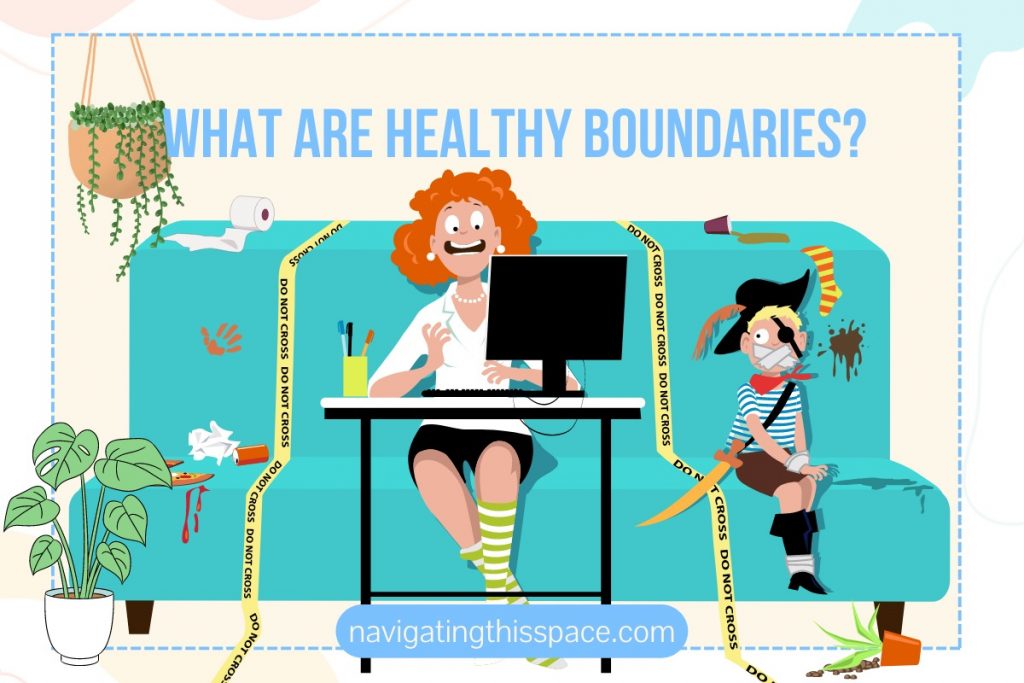
If you’re struggling with setting boundaries, you’re not alone.
Many people have difficulty setting personal boundaries, especially when it comes to their loved ones. Seeking the knowledge to learn how to create a healthy barrier between you and your people is a great first step, so I applaud you.
Setting boundaries are important because it helps you to maintain a healthy relationship with yourself and others.
When you have healthy boundaries, you know your limits, and no one who respects you will ever force you to ignore your limits to please them.
Setting boundaries help prevent burnout, resentment, and other negative consequences of overextension.
Healthy boundaries also allow you to be more assertive.
When you know your limits, it’s easier to communicate them to others. This can help reduce conflict and, as a bonus, improve your relationships.
What Happens If You Don’t Have Boundaries?
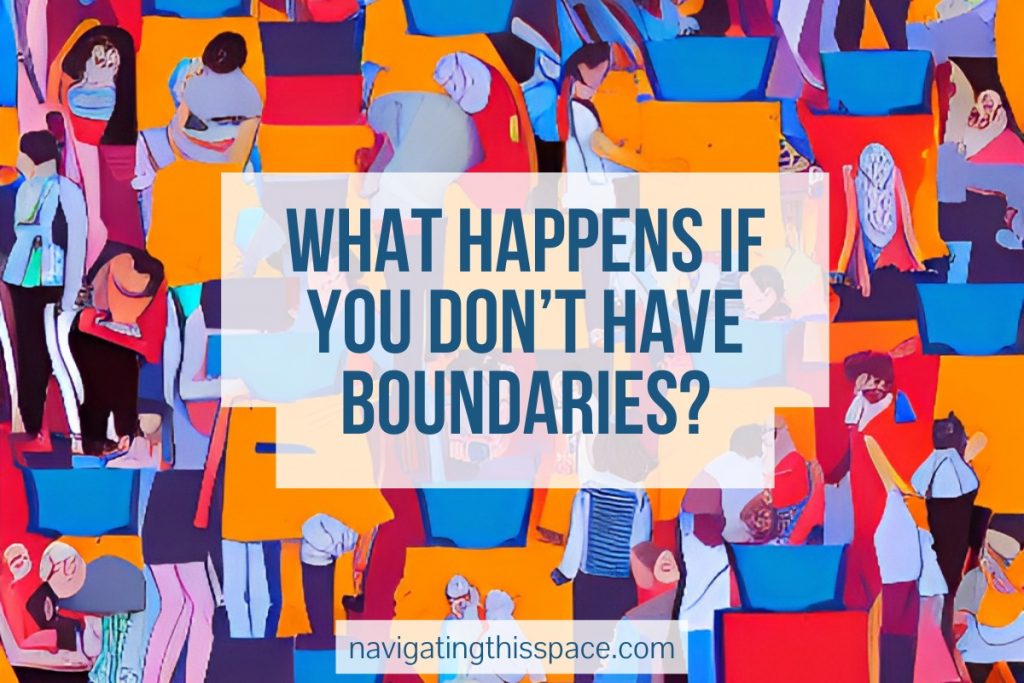
Not having boundaries is an open invitation for people to take advantage of you.
As I write this, I have a flashback of all the people who saw that I had poor boundaries and took every advantage they could. But they did me a favor by revealing that I had allowed them free reign to do as they pleased.
The truth is people who intend to use people to get what they want in life will always take advantage of a situation they deem easy; but just like everything in life, they have a purpose.
They come to teach you by showing you where you could tighten up so another person with more malicious intent can’t come in and do serious damage in the future.
You may not see it that way; at first, I certainly didn’t. However, situations we deal with, especially the ones we label as negative, are all lessons we need to learn to excel in life.
When you don’t have boundaries, people will treat you however they want because they know you won’t do anything to stop them or hold them accountable.
This can lead to issues like:
– self-disappointment
– resentment
– feeling used
– being taken for granted
– and so many more negative emotions and experiences
Types of Boundaries
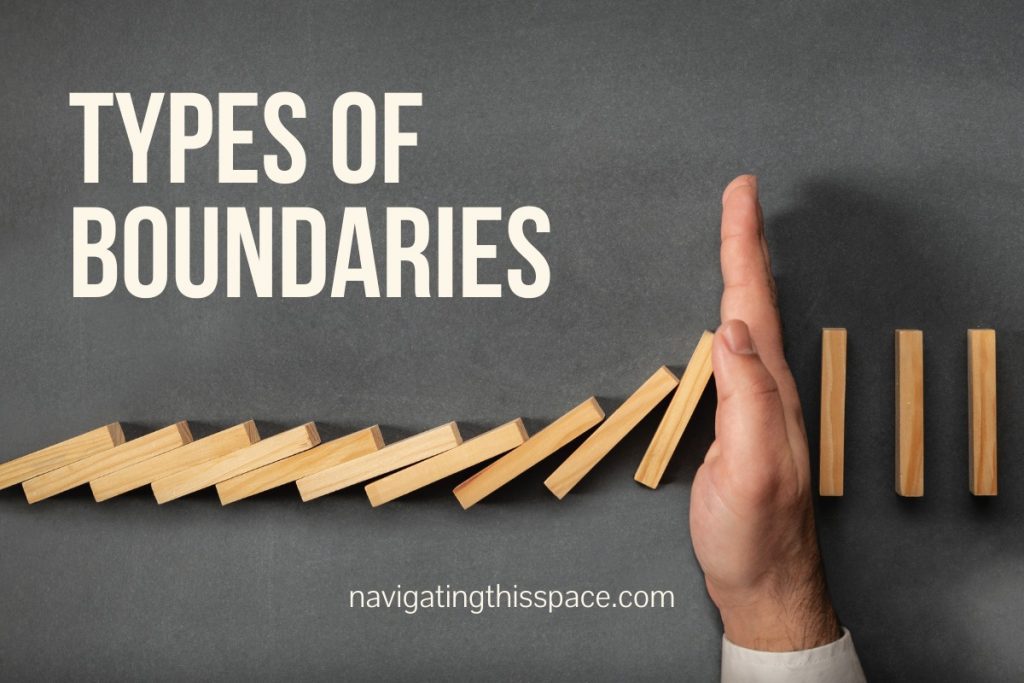
There are four main types of boundaries that you should be aware of.
- Physical boundaries are the limits we set on people regarding personal space and physical touch.
- Emotional boundaries are the limits we set on how much someone can emotionally affect us.
- Mental boundaries are the limits we set on what thoughts and ideas we allow into our minds.
- Spiritual boundaries are the limits we set on our beliefs and values.
Let’s take a closer look at each one.
1. Physical Boundaries
Setting physical boundaries has a lot to do with setting limits on how people can physically interact with you.
This includes setting limits on the following:
– personal space
– hugging/touching
– sexual activity
Some people are comfortable being touched by anyone, while others, like me, only feel comfortable being touched by certain people.
There is no right or wrong answer here; it’s all about your personal preference and what feels right for you.
Creating boundaries, especially physical ones, and communicating them clearly will educate the people you interact with to know what is and isn’t acceptable.
It’s important to remember that you have a right to set these boundaries even if the other person disagrees with them.
Your boundaries are for you, not for them, and if they violate those boundaries, they’re showing you that they do not respect you.
This type of boundary covers sexual boundaries, work boundaries, and relationship boundaries.
You get to decide how physical things can get, and no one has the right to pressure you into doing anything you don’t want to do.
For example:
You may be okay with hugging and kissing in a private romantic setting but a public display of affection may make you uncomfortable.
It’s important to communicate these boundaries to your partner, so they know where you stand.
The same goes for work boundaries. You may be comfortable with one of your co-workers physically touching you but not another.
Setting these boundaries early on is important, so the other person knows where they stand.
Again, it’s all about setting the limits that feel right for you.
It’s also important to remember that you can change your mind about what you’re comfortable with at any time and you have every right to do so.
2. Emotional Boundaries
Emotional boundaries are set when you decide how much emotion you’re comfortable sharing with others and how much emotion you’re comfortable having them share with you.
Some people are more emotionally open than others, and that’s perfectly okay.
Others, on the other hand, prefer their emotions to be kept private.
Setting emotional boundaries doesn’t make you heartless or cold. It just means that you’re not comfortable sharing certain emotions with certain people and vice versa.
Again, if you’re not comfortable with something, set your own boundaries because when that person offloads their emotional turmoil on you, you have to deal with how your body feels and how your brain processes their information, not them.
Poor boundaries lead to people taking advantage of your kindness and good nature by expecting you to be their dumping ground for all their negative emotions.
Don’t get me wrong, it’s perfectly okay to lend a helping hand or a shoulder to cry on every now and then. But, if someone is constantly offloading their emotional baggage on you, it’s time to set some boundaries.
It’s important not to feel guilty when it comes to your self-care and your mental health.
3. Mental Boundaries
Mental boundaries are the limits you set on what thoughts and ideas you allow into your mind.
This includes setting limits on:
– what we watch
– what we read
– who we spend time with
– how we speak to and about ourselves
Your mental health is just as important as your physical health, and you should take care of it just the same.
You wouldn’t feed yourself poison, so why would you allow negative thoughts and ideas into your mind?
Be mindful of what you allow yourself to think about and believe.
Also, be careful of the trends you see on social media. Just because something is popular doesn’t make it healthy for you.
Do your research, question things, and think for yourself.
4. Spiritual Boundaries
Spiritual boundaries are set when we decide how much of our beliefs and values we’re comfortable sharing with others and vice versa.
This includes setting limits on:
– what we believe in
– how we practice our faith
– how involved we want to be in spiritual/religious activities
Like all the other types of boundaries, there is no right or wrong way to go about this, and forcing your way onto another person is not respecting their boundaries.
You don’t owe anyone an explanation, and you shouldn’t have to justify your beliefs to anyone.
Respect other people’s beliefs, especially if they differ from your own.
The world is made up of many different people, cultures, religions, and spiritual beliefs, making it so beautiful.
There are plenty of opportunities to expand your knowledge and grow as a person if you’re willing to open your mind and listen.
Key Elements To Keep in Mind
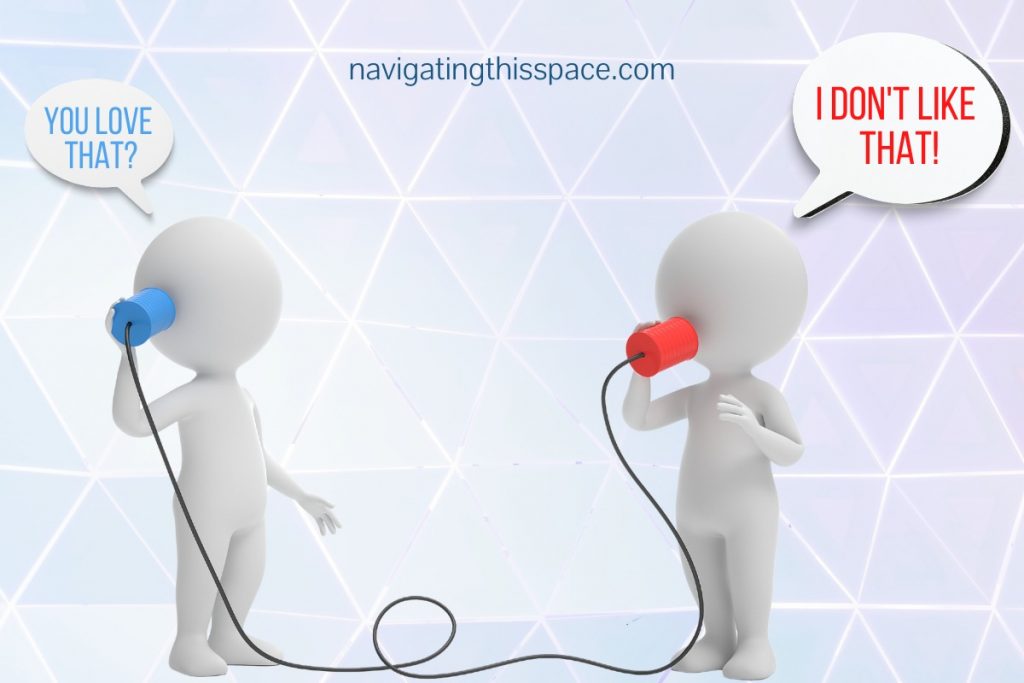
These are the prerequisite when setting your boundaries:
Your boundaries should be:
– realistic
– based on your values
– communicated clearly
– enforced when they’re being violated
When you set boundaries, you’re sending the message that you value your time, energy, and attention. However, be mindful not to set rigid boundaries because life is unpredictable and you are constantly changing.
What may have worked for you in the past may not work for you now because you are different. Your knowledge has expanded, your understanding has developed, and how you handle situations is a lot different from when you were younger.
Keep in mind that if you are handling situations with the same mentality as your younger self, you’ll inevitably end up in the same situations with different people over and over again until you learn your lesson.
The goal is to grow and develop as a person so that you can handle situations more efficiently.
How To Set Healthy Boundaries in 4 Steps
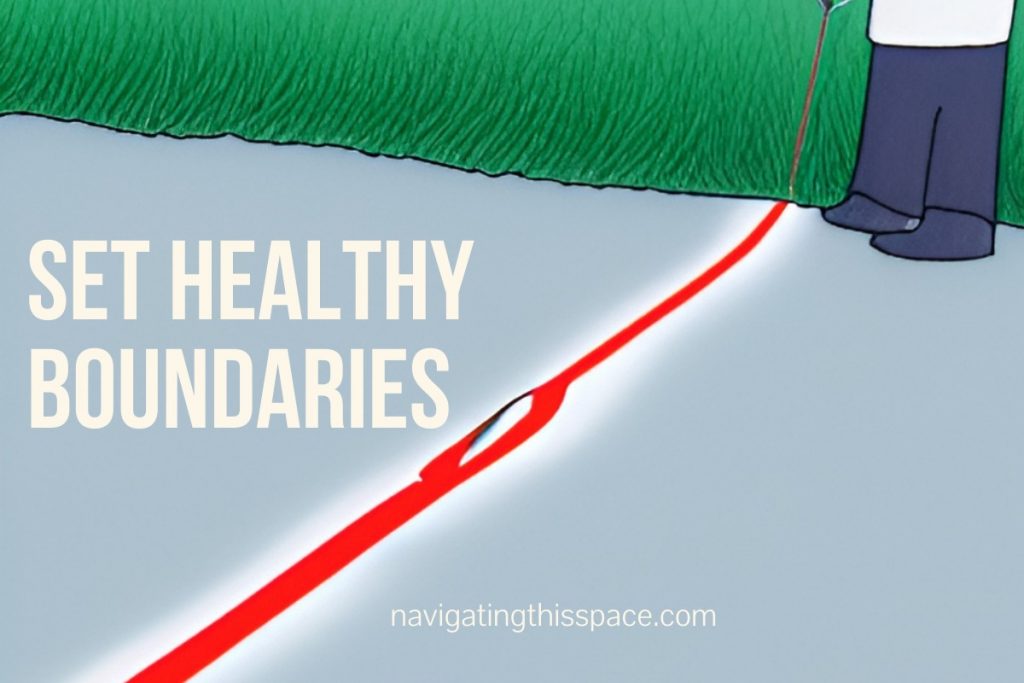
Here are the steps to set healthy boundaries:
Step 1. Know Your Limits
The first step in boundary setting is to know your limits.
You have to be aware of what you will tolerate and what you won’t.
This can be difficult to do because, a lot of the time, we’re not even aware of our own limits.
The best way to find out is by paying attention to your thoughts and emotions.
For example, let’s say you have a friend who always asks to borrow money from you.
You may start to feel taken advantage of or resentful toward them even though you can’t quite put your finger on why.
This clearly signifies their behavior is crossing a boundary for you.
Another example could be if you constantly feel drained after spending time with someone. It’s likely that they are crossing your emotional, physical, or mental boundaries in some way.
The key is to be aware of how you’re feeling and to trust your gut instinct.
A great way to become aware of why you’re feeling the way you do after a certain unsettling situation is to journal about it. When you have deep conversations with yourself, you’ll gain insight into your innermost thoughts and feelings, which will help you understand your limits better.
Once you know your limits, you can start setting clear boundaries to protect yourself.
(Recommended article: How To Start Journaling)
Step 2. Set Consequences
Boundaries protect your emotional well-being and mental well-being, so it’s important to set clear consequences for when they are crossed.
Consequences send a strong message that you’re not going to tolerate certain behavior and that there will be repercussions if the boundary is violated.
For example:
If someone at work constantly calls you on your time off to discuss work-related situations, they may have blurred work-life boundaries and assume you’re the same.
Instead of ignoring their calls, let them know that you are uncomfortable discussing work-related subjects outside of working hours and that if they continue to call, you will not answer.
If they still don’t get the message, then follow through with your consequence and don’t answer their calls.
Do what you say you will, and you’ll start seeing results.
Step 3. Communicate Your Boundaries
The next step is to communicate your boundaries to the people in your life.
This can be difficult because it requires you to be assertive and confident in what you’re saying, which can be a challenge if you’re not used to doing it.
The most important thing to remember is that you have a right to set boundaries, and you don’t need to justify or explain them to anyone.
Let’s go back to the example of the friend who is always asks to borrow money.
You could say, “I’m not comfortable with you asking me for money, it seems like you may be taking advantage of me, and I don’t like it. I’d appreciate it if you refrain from asking again.”
Or, if you have a friend who is always venting to you about their problems and you’re starting to feel drained, you could say something like, “I’ve always listened intently whenever you share an issue with me and tried to help. However, sometimes what you share affects me mentally, and I have to protect my mental health, so please don’t overshare with me or vent to me about your problems every time there’s an issue. I can only help sometimes, not all the time.”
If you want to get through to them, it’s important that you express how their actions are making you feel without coming across as attacking.
Saying something like, “You’re always borrowing money from me and it’s annoying,” will put the person in a defensive mode which will probably trigger an argument.
It’s also important to remember that you can’t control how someone else reacts to your boundary; they will either respect it or they won’t.
If they don’t respect it, take that as a clear indication that they do not care about you as much as you thought, and they’re probably self-centered.
Tips for communicating with others about your boundaries
– Be assertive and confident without being aggressive
– Use “I” statements (e.g., I feel…)
– Don’t justify or explain your boundaries. You have a right to set them
– Express how their actions are making you feel without attacking them
– Remember that you can’t control how someone else responds
Step 4. Be Assertive
The fourth step is to be assertive when enforcing your boundaries.
Once you’ve set boundaries for yourself, your limit will be tested. To not cave in and go along with something you don’t want to do, you need to be assertive when this happens.
This means that even if the person doesn’t respect your boundary or tries to convince you to change your limits to please their personal agenda, you need to stand firm and not give in.
Communicating your boundary is only half the battle. The other half is making sure that it’s respected and followed.
If an energy vampire or opportunist sees that you will bend, break, or give in to their demands, they will continue pushing and using you because they know they can.
To avoid this, whenever your boundary is crossed or tested, be assertive in your response and let them know the consequences of violating your limitations.
If someone crosses a boundary, it’s important that you take action immediately and not tolerate their behavior.
A lag in response may give them the idea that you weren’t serious about your boundary in the first place.
Dealing With Boundary Violations
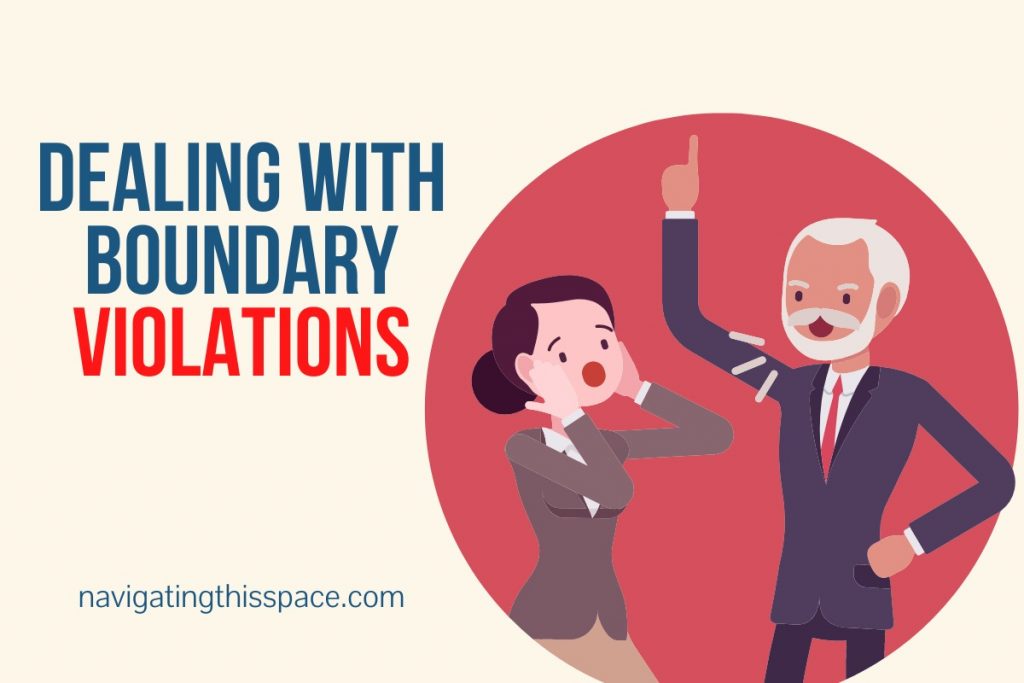
Clearly communicating what you’re okay with when it comes to intimate relationships, personal relationships, and even professional relationships is essential for maintaining healthy connections with others.
However, even if you’re very clear about your boundaries, there’s always a chance that someone will violate them.
It could be an intentional act, or it could simply be a result of the other person not knowing or understanding your limits.
Either way, if your boundary is violated, it’s important that you communicate clearly what your boundary is and what would happen if it’s violated.
Not doing anything or continuing to tolerate the behavior will send the message that you’re okay with the other person crossing your boundaries.
There’s never a need to be unpleasant about a boundary violation. Everything can be done politely.
Yes, you may be hurt that the person wasn’t more thoughtful or considerate. But remember, most of the time, people are wrapped up in their thoughts, so they’re not always aware of how their actions or words might affect you.
When this happens, be the grounding rod they need and show them that they have to consider your feelings and needs.
Don’t Apologize for Valuing Yourself
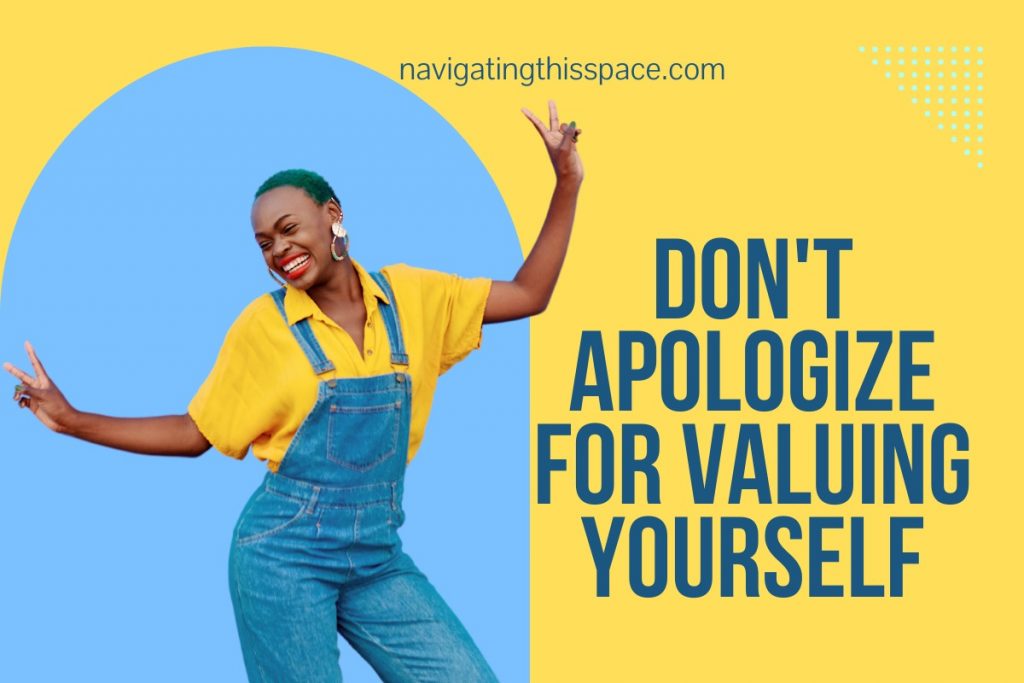
Setting boundaries is important to taking care of yourself and maintaining healthy relationships.
It’s okay to say no, it’s okay to put yourself first, and it’s okay to walk away from anything or anyone that doesn’t respect your boundaries.
Never apologize for taking care of yourself or setting boundaries that protect your mental and emotional well-being.
You’re not being selfish. You’re simply taking care of yourself the way you should.
People who respect you will never mind or violate your boundaries.
So, how do you set healthy boundaries for yourself?
It starts with becoming aware of your limits and what’s important to you. Once you know that, you can start setting consequences for boundary violations and communicating them to the people in your life.
But it takes time and practice to get good at enforcing boundaries. If you find setting boundaries difficult or triggering, please reach out for help.
Many mental health professionals can assist you in creating a healthier lifestyle.
Boundaries can be tricky things to navigate; but with time and patience, they can help improve your mental health and relationships.
What boundaries have you set for yourself? Let me know in the comments below.
Also, sign up for my weekly newsletter to receive more mental health tips and resources straight to your inbox. As a bonus, you’ll also get my free E-book: The Secrets of Productivity.
Questions You May Have
How do I start making boundaries?
The first step is to get in touch with what you’re comfortable with and what you’re not comfortable with. Once you know that, you can start setting consequences for boundary violations and communicating them to the people in your life.
What are unhealthy boundaries?
Unhealthy boundaries are anything that goes against your self-care or allows someone to treat you in a way that you’re uncomfortable with.
For example:
– Allowing someone to interrupt you or talk over you constantly
– Not being able to say no to requests
– Doing things that make you feel uneasy
How can I be nice but set boundaries?
You can be nice and set boundaries by politely communicating your limits to the other person. It’s as easy as saying, “I’m sorry, but I’m not comfortable with that.”
What if the other person doesn’t respect my boundaries?
If someone doesn’t respect your boundaries, you may need to distance yourself from that person because they do not respect you or your needs.
How do you tell if you have no boundaries?
If you allow yourself to be constantly walked over or taken advantage of, it’s likely that you have no boundaries. This can lead to feelings of resentment, anger, and/or anxiety, mostly directed at yourself, which will cause your self-esteem to suffer.
Pin It!
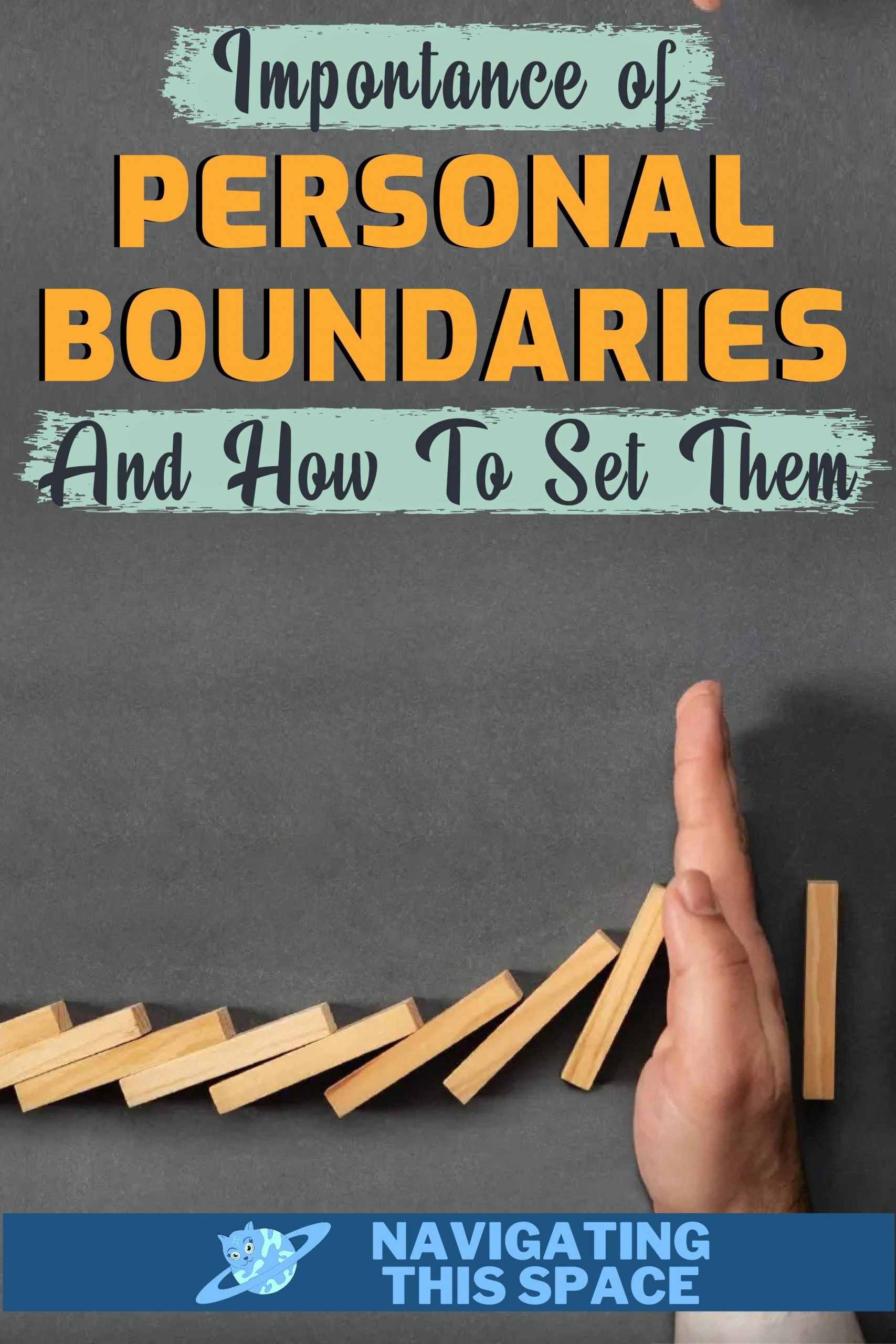
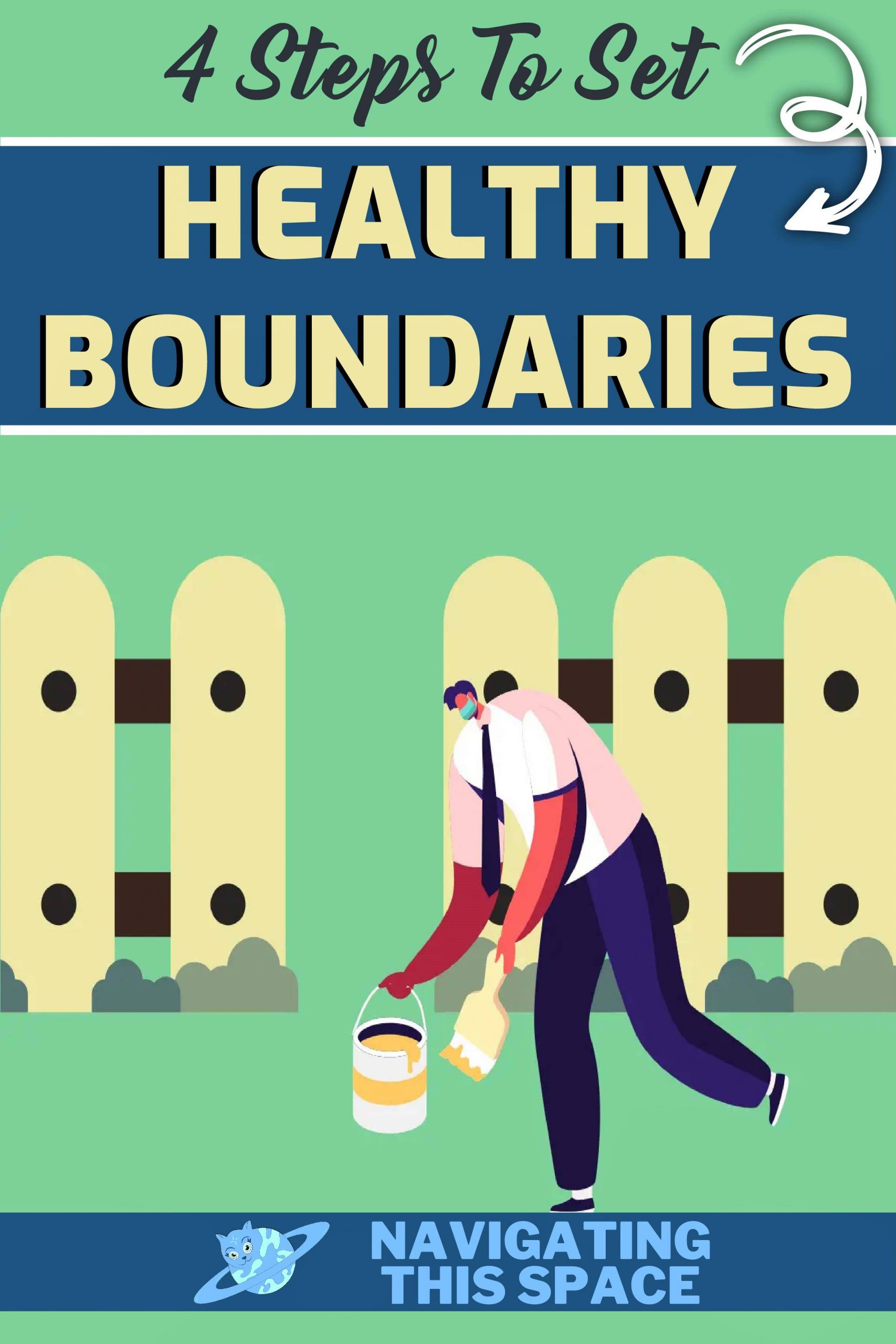





This was a very good read. Boundaries are very important for our mental health. Thank you for sharing!
Thank you for reading Ghada, I appreciate your feedback.
I loved this article. Creating boundaries and knowing your boundaries is super important. Thank you for such an in depth and insightful article!
I’m happy you loved the article! Thank you for reading and commenting.
Definitely, I have problems with boundaries. And I am still afraid to say no. I loved your article and tips. Very helpful!
Maybe you should add your reason for saying no so it becomes easier to say no Olga, remember if they truly care they’ll respect your choice no matter what. Thanks for reading and commenting, start saying no more.
Written very well. You included very important points regarding setting boundaries and keeping them. Thank you for sharing on this important topic. 🤗
Pastor Natalie (Examine This Moment)
Letstakeamoment.com
You are very welcome Pastor Natalie, thank you for being an avid reader!
Thanks for this amazing blog post! It is so insightful and has given me some real perspective on setting boundaries. I’m definitely going to try out some of these tips. Thanks again! 🙂